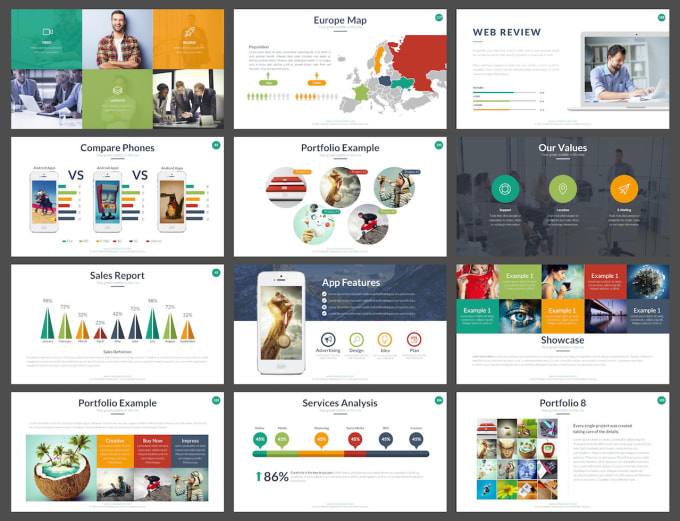

To understand how changes in national data reflect the impact of legislation and policies and.To track changes in the prevalence of mental health issues and access to mental health care.To provide a snapshot of mental health status among youth and adults for policy and program planning, analysis, and evaluation.Which states have higher barriers to accessing mental health care?.How many adults and youth have access to mental health care?.How many adults and youth have access to adequate insurance?.How many adults and youth have access to insurance?.How many adults and youth have substance use issues?.How many adults and youth have mental health issues?.In the above links you will find a Collection of Data across all 50 states and the District of Columbia answering the following questions:
#Infographic creator annual report download
However, these figures may actually be an overestimate of active mental health professionals, as it may include providers who are no longer practicing or accepting new patients.Įxplore the web-based report using the links provided on the left or download the printable report.
In the U.S., there are an estimated 350 individuals for every one mental health provider. IEPs, with sufficient resources for schools and teachers, are critical for ensuring that youth with disabilities can receive the individualized services, supports, and accommodations to succeed in a school setting. 
718 percent of students are identified with emotional disturbance for an individualized education program (IEP). In Arkansas (ranked 51), nearly one-quarter of youth with private insurance do not have coverage for mental health care.
 Nationally, 1 in 10 youth who are covered under private insurance do not have coverage for mental or emotional difficulties – totaling over 1.2 million youth. Most (57.3%) youth with severe depression do not receive any care. Nationally, only 28% of youth with severe depression receive some consistent treatment (7-25+ visits in a year). In South Carolina, the lowest ranking state, nearly 8 in 10 youth with depression do not receive care. Asian youth with major depression were least likely to receive specialty mental health care, with 78% reporting they did not receive mental health services in the past year. 59.8% of youth with major depression do not receive any mental health treatment. In Georgia (ranked 51), over one-third of adults experiencing frequent mental distress are unable to afford a doctor’s visit. 22.87% of adults who report experiencing 14 or more mentally unhealthy days each month were not able to see a doctor due to costs. who meet the criteria for an illicit drug or alcohol use disorder. That is equivalent to over 1.5 million youth in the U.S.
Nationally, 1 in 10 youth who are covered under private insurance do not have coverage for mental or emotional difficulties – totaling over 1.2 million youth. Most (57.3%) youth with severe depression do not receive any care. Nationally, only 28% of youth with severe depression receive some consistent treatment (7-25+ visits in a year). In South Carolina, the lowest ranking state, nearly 8 in 10 youth with depression do not receive care. Asian youth with major depression were least likely to receive specialty mental health care, with 78% reporting they did not receive mental health services in the past year. 59.8% of youth with major depression do not receive any mental health treatment. In Georgia (ranked 51), over one-third of adults experiencing frequent mental distress are unable to afford a doctor’s visit. 22.87% of adults who report experiencing 14 or more mentally unhealthy days each month were not able to see a doctor due to costs. who meet the criteria for an illicit drug or alcohol use disorder. That is equivalent to over 1.5 million youth in the U.S. 
reported a substance use disorder in the past year. Hispanic adults with AMI were least likely to have health insurance, with 19% reporting they were not covered by insurance.
10.8% (over 5.5 million) of adults with a mental illness are uninsured. 42% of adults with AMI reported they were unable to receive necessary care because they could not afford it. Almost a third (28.2%) of all adults with a mental illness reported that they were not able to receive the treatment they needed. Even in Montana (ranked #1), over 4 in 10 adults with a mental illness did not receive care. Over half (54.7%) of adults with a mental illness do not receive treatment, totaling over 28 million individuals. 11.5% of youth (over 2.7 million youth) are experiencing severe major depression. 16.39% of youth (age 12-17) report suffering from at least one major depressive episode (MDE) in the past year. are experiencing depression that is severely impairing their ability to function at school or work, at home, with family, or in their social life. 11% of adults who identified with two or more races reported serious thoughts of suicide in 2020 – 6% higher than the average among all adults. The percentage of adults reporting serious thoughts of suicide is 4.84%, totaling over 12.1 million individuals. experience serious thoughts of suicide, with the highest rate among multiracial individuals. Of them, 93.5% did not receive any form of treatment. 15.35% of adults had a substance use disorder in the past year. The vast majority of individuals with a substance use disorder in the U.S. That is equivalent to over 50 million Americans. In 2019-2020, 20.78% of adults were experiencing a mental illness.








 0 kommentar(er)
0 kommentar(er)
